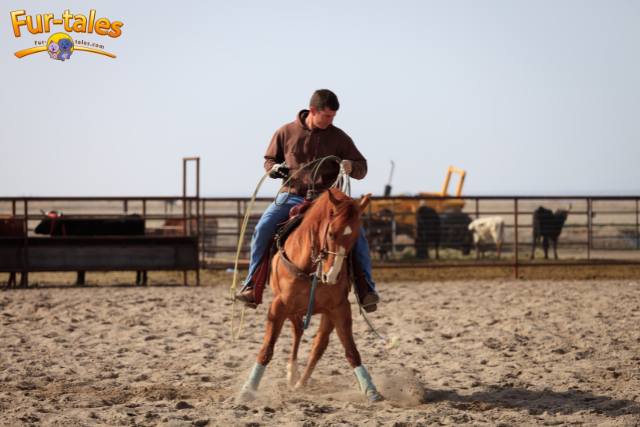
Basic Training Techniques for Horses: A Friendly Guide for New Horse Owners
Welcoming a horse into your life is an incredible journey—majestic, challenging, and deeply rewarding. Whether you’re dreaming of leisurely trail rides, competitive dressage, or just a strong bond with your equine companion, it all starts with basic training.
This guide is here to help new horse owners and equestrian enthusiasts understand the foundation of horse training. We’ll cover essential techniques, offer new pet owner tips, and guide you through safe, humane practices that create a trusting partnership with your horse.
Why Basic Horse Training Matters
Unlike other pets, horses are large, powerful animals that require careful handling. Proper training keeps both you and your horse safe while laying the groundwork for everything from grooming and leading to more advanced riding disciplines.
Well-trained horses are:
- Easier to manage and ride
- Safer for handlers and children
- Happier and more confident
Think of basic training as the foundation of your horse’s education. The stronger it is, the more you can build on it later.
Getting Started: Before You Begin Training
1. Understand Your Horse’s Nature
Horses are prey animals. This means they’re naturally alert, sensitive to body language, and quick to react. Building trust is essential—your horse needs to feel safe with you.
2. Create a Calm Environment
Start training in a quiet paddock or round pen with minimal distractions. A consistent routine and calm demeanor go a long way in helping your horse feel secure.
3. Check Your Gear
Use well-fitting tack and training tools:
- Halter and lead rope
- Lunge line
- Bridle and saddle (as needed for groundwork or riding)
- Protective boots or wraps (optional for support)
???? New pet owner tip: Always check your horse’s health before training. Look for signs of discomfort, lameness, or stress. Use a pet health checklist or consult your equine vet.
Core Horse Training Techniques
Now, let’s dig into the basic training methods every horse owner should know.
1. Desensitization (Sacking Out)
This helps your horse get used to strange sights, sounds, and touch.
How to do it:
- Use a soft towel, flag, or plastic bag.
- Gently rub or wave it around your horse’s body.
- Reward calm behavior with praise or a treat.
Start small and work up to louder or closer movements. The goal is to build confidence, not cause fear.
2. Leading and Ground Manners
Every horse should learn to walk beside you calmly on a lead rope.
Key steps:
- Walk beside the horse’s shoulder—not in front.
- Use gentle pressure to signal starts, stops, and turns.
- Teach respect for your personal space.
Practice daily walks, halting, and backing up. This is great for building trust and teaching your horse to pay attention to your cues.
3. Lunging (or Longeing)
Lunging helps your horse understand voice commands and body language while improving balance and obedience.
Basic lunge commands:
- “Walk” – Start in a slow circle
- “Trot” – Increase energy for a steady gait
- “Whoa” – Stop completely
- “Reverse” – Change direction
Use a lunge line and whip (for guidance, not punishment). Begin in short sessions—about 10–15 minutes.
4. Voice Commands
Consistent voice cues teach your horse to respond to verbal signals.
Popular voice cues:
- “Whoa” (Stop)
- “Walk on” (Move forward)
- “Trot” or “Canter” (Change gaits)
- “Back” (Step backward)
Pair your words with body cues for clarity. Over time, your horse will associate the sounds with actions.
5. Yielding to Pressure
This teaches your horse to move away from gentle physical cues—a critical safety skill.
Examples:
- Apply light pressure on the halter to ask your horse to step sideways.
- Press lightly on the hindquarters to ask for a turn on the forehand.
When your horse yields correctly, release the pressure immediately to reinforce the behavior.
6. Mounting and Standing Still
Before you ride, your horse must learn to stand quietly while you mount.
Steps to teach this:
- Practice standing still at the mounting block.
- Reward calm behavior with praise.
- Only proceed when your horse is relaxed.
Never rush this step—it’s essential for safety and trust.
Common Horse Training Mistakes to Avoid
Even experienced trainers can slip up. Avoid these common pitfalls:
❌ Inconsistent cues – Mixed signals confuse your horse
❌ Losing patience – Training takes time; never punish out of frustration
❌ Skipping groundwork – Riding success depends on strong fundamentals
❌ Overtraining – Keep sessions short to prevent mental and physical fatigue
???? First vet visit guide: If your horse is uncooperative or displays discomfort, pain may be the cause. A vet check can rule out health issues before you blame behavior.
How to Tell If Your Training Is Working
Look for these signs of progress:
- Your horse responds to light cues
- Calm body language (soft eyes, relaxed muscles)
- Improved focus and willingness
- Decreased fear reactions to new objects
Remember, every horse learns at a different pace. Celebrate small wins and keep moving forward!
Positive Reinforcement: A Powerful Tool
Positive reinforcement (rewards-based training) builds trust faster than force or fear. You can use:
- Verbal praise (“Good boy!”)
- Gentle petting
- Treats (like carrots or horse cookies)
When your horse gets something good after doing something right, they’re more likely to repeat it.
Safety Tips for Horse Training
- Wear proper gear: boots, gloves, helmet (if riding)
- Stay aware of your horse’s body language
- Never wrap lead ropes around your hand
- Train in a fenced, escape-proof area
- Avoid working in extreme weather
???? Pro tip: Work with a reputable trainer if you’re unsure about any step. It’s a smart investment in safety and success.
FAQs: Basic Horse Training
Q: What age should I start training my horse?
A: You can begin groundwork (like leading and desensitizing) as early as a few months old. Under-saddle training usually starts around 2–3 years, depending on the horse’s development.
Q: How long does it take to train a horse?
A: Training is ongoing, but basic groundwork and under-saddle skills can take several months. Consistency, patience, and your horse’s temperament all play a role.
Q: Can I train my horse myself?
A: Yes, especially if you focus on groundwork. However, it’s helpful to work with a professional trainer—especially if you’re new or facing challenges.
Q: What treats are safe for horse training?
A: Apples, carrots, and commercial horse treats are great. Avoid sugary or processed human foods.
Q: What if my horse won’t listen?
A: Rule out health issues first. Then revisit basic groundwork and seek help from a qualified trainer who uses humane, positive methods.
Image Designed Using Canva
